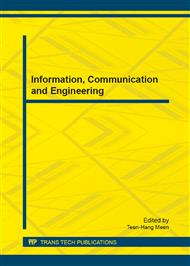p.67
p.73
p.81
p.87
p.93
p.99
p.105
p.111
p.117
Liu’s Polytomous Item Relational Structure Theory Based on Q-Matrix Theory
Abstract:
In this paper, an improved polytomous item relational structure theory based on Q-matrix theory is proposed, using Tatsuoka’s Q-matrix theory, we can construct the test with all efficient items which are fitting in with the given relational structure of cognitive attributes, and then, before the test, using Liu’s before-test item ordering theory, an ideal relational structural graph of itemscan be constructed, and the real efficient items can be obtained accordingly. After testing the students, an after-test structure of items can be estimated by using the Liu’s polytomous item relational structure theory. Furthermore, using Liu’s criterion related validity index, we can evaluate the estimated item relational structure of the test, and the results could be useful for cognitive diagnosis and remedial instruction.
Info:
Periodical:
Pages:
93-98
Citation:
Online since:
February 2013
Authors:
Keywords:
Price:
Сopyright:
© 2013 Trans Tech Publications Ltd. All Rights Reserved
Share:
Citation:


